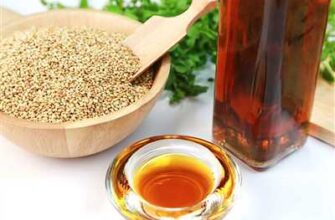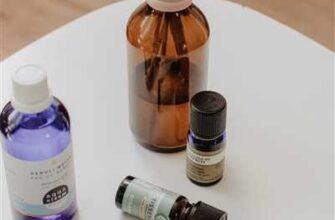
Thoughts on making moringa powder at home? It’s a tasty way to utilize the many health benefits of this superfood. Moringa powder is made from dried leaves of the moringa tree. These leaves have been cleaned and thoroughly dried to remove any moisture. The process of making moringa powder involves grinding the dried leaves into a fine powder.
Moringa powder is a great substitute for caffeine-free tea or coffee. It can be used in recipes to add a little extra energy and good health to your daily meals. The main steps in making moringa powder at home include drying the leaves, washing them properly to remove any dirt or impurities, and grinding them into a fine powder. There are different methods to dry the leaves, such as air drying or utilizing a microwave at a low temperature.
The final powder should be smooth and finely ground, without any lumps or chunks. Properly dried and processed moringa leaves will have a bright green color, indicating that the powder is rich in nutrients. Plus, homemade moringa powder is more natural and has fewer additives compared to commercially manufactured versions.
There are many ways to use moringa powder in your daily diet. You can add it to smoothies, salads, or even make a moringa tea. The taste of moringa powder is unique and may not match the flavor profile of other ingredients. However, it can be a great addition to your diet if you want to incorporate more natural and healthy ingredients.
- 10 Ways to Use Moringa Powder Plus Tasty Recipes
- Moringa tea: a caffeine-free coffee substitute
- Utilising Moringa Leaf Powder
- Final Thoughts On Making Moringa Powder
- The main steps of moringa leaf powder manufacturing process
- Washing the Moringa leaves
- There are main three processing methods for drying Moringa leaves
- Moringa leaf powder grinding:
- Moringa powder packaging:
- Sources
10 Ways to Use Moringa Powder Plus Tasty Recipes
Moringa powder is a versatile superfood that can be used in a variety of ways. Whether you are looking for a caffeine-free substitute for your daily coffee or want to incorporate more health benefits into your meals, moringa powder is a good choice. Here are 10 ways to use moringa powder, plus some tasty recipes to try:
| 1. Smoothies | Mix a teaspoon of moringa powder into your favorite smoothie recipe for an extra health boost. |
| 2. Tea | Brew moringa powder with hot water to create a refreshing and nutritious tea. |
| 3. Salads | Sprinkle moringa powder over your salads for added flavor and nutritional benefits. |
| 4. Homemade Energy Bars | Add moringa powder to your homemade energy bars for an extra dose of nutrients. |
| 5. Matcha Substitute | Mix moringa powder with hot water and froth for a caffeine-free alternative to matcha. |
| 6. Baked Goods | Incorporate moringa powder into your baking recipes for a natural and nutrient-rich twist. |
| 7. Dips and Spreads | Add moringa powder to your favorite dips and spreads for a unique flavor and health boost. |
| 8. Moringa Latte | Whisk moringa powder into warm milk for a homemade moringa latte. |
| 9. Moringa Water | Mix moringa powder with water and lemon for a refreshing and detoxifying drink. |
| 10. Moringa Ice Cream | Add moringa powder to your homemade ice cream recipe for a healthy and tasty treat. |
These are just a few ways to use moringa powder in your daily life. The possibilities are endless, so experiment and find the methods that match your taste and preferences. Just remember to properly clean and dry the moringa leaves before processing them into powder. Utilising a clean and dry environment will help to remove any moisture and ensure the final product is of good quality. There are different methods for making moringa powder, but the main steps involve washing the leaves, drying them, grinding them into a fine powder, and properly packaging the powder to preserve its natural health benefits.
Whether you choose to make your own moringa powder at home or buy it from a reputable manufacturer, incorporating this superfood into your diet is a great way to boost your health and well-being.
Moringa tea: a caffeine-free coffee substitute
When it comes to making moringa powder, there are three main steps: drying the leaves, grinding them, and processing the powder. But did you know that you can also utilize dried moringa leaves to make a delicious and caffeine-free substitute for coffee? Moringa tea is a great option for those looking for a natural and healthy alternative to their daily cup of joe.
To make moringa tea, the first step is to properly dry the moringa leaves. This can be done by washing the leaves thoroughly and removing any excess moisture. One good method is to air dry the leaves for about 10 days, but if you want to speed up the process, you can use a microwave as well. Just make sure to set it at a low temperature to avoid damaging the nutritional properties of the leaves.
Once the leaves are completely dried, they can be ground into a fine powder using a proper grinding equipment. The final step is to pack the moringa powder properly for storage or use in recipes.
Moringa tea is a caffeine-free alternative that is rich in energy and a great source of health benefits. It can be enjoyed hot or cold, and its taste is often described as earthy and slightly sweet, similar to matcha. Plus, making your own homemade moringa tea allows you to control the quality of the ingredients and ensure the tea is free of any added chemicals or artificial flavorings.
There are several ways you can enjoy moringa tea. You can steep the powder in hot water, just like you would with traditional tea leaves, or mix it into smoothies, salads, or other beverages for an extra nutritional boost. With its natural energy and health benefits, moringa tea is a great addition to any healthy lifestyle.
So, if you’re looking for a caffeine-free substitute for coffee that is packed with nutrition and easy to make at home, give moringa tea a try. You’ll not only be supporting your health, but also enjoying a tasty and nutritious beverage.
Utilising Moringa Leaf Powder
Moringa leaf powder is not only a natural, healthy substitute for processed caffeine-free coffee, but it can also be used in a variety of recipes. With the right equipment and a few simple steps, you can easily make your own homemade moringa leaf powder at home.
The main steps in the process of making moringa leaf powder involve properly drying and processing the leaves to remove any moisture. There are three main methods for drying moringa leaves: air drying, microwave drying, and oven drying. Each method has its own temperature and time requirements, so you can choose the one that best suits your preferences.
Once the leaves are thoroughly dried, you can grind them into a fine powder using a coffee grinder or a high-speed blender. Make sure to clean the equipment well before use to avoid any contamination. The final powder should be fine and smooth, without any clumps.
Moringa leaf powder is very versatile and can be used in various ways. It can be added to smoothies, salads, or even used as a seasoning in your favorite recipes. It is rich in essential nutrients and antioxidants, making it a great addition to your daily diet.
In addition to its health benefits, moringa leaf powder is also a good energy booster. It contains natural substances that can help increase stamina and improve overall energy levels. Plus, it is caffeine-free, so you can enjoy it any time of the day without any worries.
Moringa leaf powder can also be used as a natural substitute for matcha in Japanese-style tea. Simply mix a little bit of the powder with hot water and enjoy a refreshing and healthy drink.
When packaging your homemade moringa leaf powder, make sure to store it in an airtight container to prevent moisture and oxidation. This will help maintain its freshness and extend its shelf life. It is recommended to use the powder within six months to ensure maximum potency.
In conclusion, utilising moringa leaf powder is a great way to add a natural and healthy boost to your diet. With just a few simple steps and some good equipment, you can make your own homemade moringa leaf powder that can be used in a variety of delicious and nutritious recipes.
Final Thoughts On Making Moringa Powder
Moringa powder is a nutritious and energy-packed addition to your daily diet. Making your own moringa powder at home is a fairly simple process, but it does require some time and effort.
First, you will need to harvest the moringa leaves from your tree or purchase dried moringa leaves from a reputable source. Cleaning the leaves is a crucial step, as any dirt or insects can affect the quality of the powder. Thoroughly washing the leaves with water will ensure that they are properly cleaned.
Once the leaves are cleaned and dried, there are several methods you can use to grind them into a fine powder. One popular method is to use a coffee grinder or a high-powered blender. Both of these methods are effective in grinding the leaves into a powder-like consistency.
If you don’t have access to this equipment, you can also use a mortar and pestle to grind the leaves. While this method may require a little more time and effort, it can still yield satisfactory results.
For those who want to avoid the grinding process altogether, there are moringa leaf powder manufacturers that offer pre-packaged moringa powder. These products are a convenient option for those who are looking for a quick and easy way to incorporate moringa into their daily routine.
Regardless of the method you choose, it’s important to remember that moringa powder is versatile and can be used in a variety of ways. It can be added to smoothies, used as a substitute for matcha in recipes, or even brewed into a cup of moringa tea.
Moringa powder is also a great addition to salads, providing a burst of nutrients and a unique flavor. It can be sprinkled on top of your favorite salad or mixed into homemade salad dressings.
In addition to its numerous health benefits, moringa powder is a natural source of energy. It’s a caffeine-free alternative to coffee and can provide a gentle boost of energy throughout the day.
When storing your homemade moringa powder, it’s important to use proper packaging. Airtight containers, such as glass jars or resealable bags, can help protect the powder from moisture and maintain its freshness.
In conclusion, making moringa powder at home is a rewarding process that allows you to fully utilize the health benefits of this superfood. Whether you choose to make it yourself or purchase it from a trusted source, incorporating moringa powder into your daily routine can have a positive impact on your overall well-being.
The main steps of moringa leaf powder manufacturing process

Moringa leaf powder is a versatile and nutrient-rich ingredient that can be used in a variety of recipes. Making your own moringa leaf powder at home is a simple process that requires a few basic steps. By properly drying and grinding the leaves, you can create a homemade moringa powder that is full of health benefits and can be used in your daily routine.
Step 1: Harvest and wash the leaves
The first step in making moringa leaf powder is to harvest fresh moringa leaves. Make sure to choose healthy leaves that are free of disease or damage. Once you have collected the leaves, wash them thoroughly to remove any dirt or impurities.
Step 2: Dry the leaves
After washing the leaves, lay them out to dry. There are several methods you can use to dry the leaves, including air drying, sun drying, or using a dehydrator. If you want to speed up the drying process, you can also use a microwave on a low temperature setting. Make sure the leaves are fully dried before proceeding to the next step.
Step 3: Grind the leaves into a powder
Once the leaves are dry, gently remove any stems, and then grind them into a fine powder. You can use a blender, food processor, or a dedicated spice grinder to achieve a smooth powder consistency.
Step 4: Store and use the powder
After grinding, make sure to store the moringa leaf powder in an airtight container to maintain its freshness. Keep it in a cool and dark place to preserve its nutrient content. Your homemade moringa powder can be used as a substitute for matcha or coffee in your favorite drinks, or you can add it to smoothies, salads, and other recipes for an extra boost of nutrients and energy.
Step 5: Packaging
If you want to sell or gift your homemade moringa powder, proper packaging is essential. Use clean and attractive containers that are food-safe to ensure the quality and longevity of the powder. Label the containers properly with the name and date of production.
By following these steps, you can easily make your own moringa leaf powder at home. Enjoy the benefits of this caffeine-free and natural powder in your daily diet!
Washing the Moringa leaves
One of the crucial steps in making moringa powder is properly washing the moringa leaves. This step ensures that the leaves are thoroughly cleaned and free from any dirt or contaminants. In addition, washing the leaves helps to remove any bitter taste that may be present.
To wash the moringa leaves, start by gently rinsing them under cold running water. Use your hands to separate the leaves and ensure that all parts are cleaned. It is essential to use clean water for washing to maintain the quality and hygiene of the final product.
For extra caution, you can soak the leaves in clean water for about 10 minutes. This will help remove any residual dirt or pesticides that may be present on the leaves. After soaking, thoroughly rinse the leaves once again to ensure they are completely clean.
If you are using moringa leaves from your own garden, it is important to check for any insects or pests that may be hiding on the leaves. Remove any unwanted visitors before proceeding with the washing process.
Once the leaves are cleaned, it is time to dry them. There are several methods for drying moringa leaves, including air drying, sun drying, and using a dehydrator. The method you choose will depend on the resources and equipment available to you.
A popular and convenient method for drying moringa leaves is using a microwave. Spread the cleaned leaves in a single layer on a microwave-safe plate. Set the microwave to a low power level and heat the leaves in short intervals, stirring in between. This will help prevent the leaves from burning and ensure even drying.
| Pros of Microwave Drying | Cons of Microwave Drying |
|---|---|
| Quick and efficient drying process | Possibility of uneven drying if not monitored closely |
| Retains more of the natural color and nutrients | Possible risk of overheating and damaging the leaves |
| Convenient for small batches or home use | May not be suitable for large-scale manufacturing |
Regardless of the drying method you choose, ensure that the leaves are dried thoroughly. There should be no moisture left in the leaves to prevent any mold or bacterial growth during storage.
Once the leaves are dried, they are ready for processing into moringa powder. Grinding the dried leaves into a fine powder is the final step in making moringa powder. You can use a blender or a dedicated grinder to achieve the desired consistency.
A few thoughts on processing and packaging: After grinding, consider sifting the powder to remove any larger particles that may not have been completely processed. Properly packaging the moringa powder in airtight containers will help preserve its freshness and prevent moisture absorption.
Moringa powder can be used in a variety of recipes and prepared in different ways. It can be added to smoothies, salads, or used as a substitute for matcha powder in beverages. Moringa powder is known for its nutrient-rich properties, caffeine-free energy boost, and health benefits.
By making your own homemade moringa powder, you have control over the quality and purity of the product. Plus, it’s a fun and tasty way to incorporate moringa into your daily diet!
There are main three processing methods for drying Moringa leaves
When it comes to making moringa powder, there are three main processing methods for drying Moringa leaves. Each method has its own advantages and it’s important to choose the one that best suits your needs.
| Method | Description |
| 1. Air drying | The leaves are washed thoroughly to remove any dirt or impurities. Then, they are spread out in a single layer on a clean surface in a warm and well-ventilated area. The leaves are left to air dry naturally, taking advantage of the warm temperature and good airflow. This method requires very little energy and is a popular choice for making homemade moringa powder. |
| 2. Oven drying | If you want to speed up the drying process, you can use an oven. After the leaves have been cleaned and dried, place them on a baking sheet in a preheated oven at a low temperature, usually around 125°F (52°C). Keep a close eye on the leaves to ensure they don’t burn. This method is ideal for those who want to make moringa powder quickly and have proper equipment. |
| 3. Microwave drying | If you’re short on time and want to expedite the drying process even further, you can use a microwave. Simply place the cleaned and dried leaves on a microwave-safe plate and heat them in short intervals of about 30 seconds. Make sure to flip the leaves over in between intervals to ensure even drying. This method is not as commonly used as the other two methods but can be useful for those who want to make small batches of moringa powder. |
Regardless of the method you choose, it’s important to ensure that the leaves are thoroughly dried before grinding them into a powder. Any moisture left in the leaves can lead to mold or spoilage. The final moringa powder can be used as a substitute for matcha in recipes, added to smoothies, salads, or made into a refreshing moringa tea. Plus, it has the added health benefits of being caffeine-free and packed with extra nutrients.
In conclusion, there are three main methods for processing and drying Moringa leaves: air drying, oven drying, and microwave drying. Each method has its own advantages and will result in a final product that can be utilized in a variety of different ways. Whether you choose to make moringa powder at home or purchase it from a manufacturing facility, the key is to ensure that the leaves are properly dried and processed to retain their natural goodness.
Moringa leaf powder grinding:
One of the main ways to utilize moringa leaves is by grinding them into a powder. Moringa leaf powder is not only tasty and can be added to smoothies, salads, or used as a substitute for matcha in making tea or coffee, but it also has many health benefits.
Before the grinding process starts, it is important to properly dry the moringa leaves. This can be done by washing the leaves thoroughly and then either air drying or using a dehydrator at a low temperature to remove the moisture. Proper drying methods are essential to ensure the final powder is of good quality and free from any moisture.
Once the leaves are dried, they can be processed into a powder using a variety of equipment. One easy and homemade method is to use a clean coffee grinder or blender. Simply add the dried moringa leaves and grind until they become a fine powder.
If you want a more thorough and professional grinding process, there are specialized moringa leaf grinding machines available that can produce a finer powder. These machines are often used in the moringa powder manufacturing industry.
Grinding the leaves will release the natural oils and unlock the full potential of the moringa leaves. The resulting powder is a vibrant green color and has a smooth texture.
Once the moringa leaves have been processed into a powder, proper packaging is essential to maintain its freshness and maximize its shelf life. The powder should be stored in an airtight container and kept in a cool, dry place.
Moringa leaf powder is a great addition to your daily diet. It is rich in vitamins, minerals, and antioxidants, and it is caffeine-free, making it a good energy boost without the jitters. Plus, it has a slightly earthy flavor that can enhance the taste of your dishes and beverages.
In conclusion, grinding moringa leaves into a powder is a simple and effective method to enjoy the health benefits of this superfood. Whether you choose to process them at home using basic equipment or invest in specialized grinding machines, the end result will be a versatile and nutrient-packed powder that can be used in various ways.
Moringa powder packaging:
Once you have completed the steps for making moringa powder, the next important aspect is the packaging. Proper packaging is essential to ensure the quality and longevity of the moringa powder. There are various methods and considerations for packaging moringa powder.
Here are three common ways to package moringa powder:
- Ziplock bags: This is a simple and cost-effective way to package small quantities of moringa powder. Ensure that the ziplock bags are clean and dry before adding the powder. Remove as much air as possible from the bag before sealing it to prevent moisture and air exposure.
- Glass jars: Glass jars are a great option for storing larger quantities of moringa powder. Make sure the jars are thoroughly cleaned and dried before transferring the powder. Seal the jars tightly to prevent moisture and air exposure.
- Sealed pouches: Sealed pouches provide excellent protection against moisture and air exposure. They are commonly used for commercial moringa powder packaging. When using sealed pouches, it is important to have proper equipment for sealing to ensure airtight packaging.
Whichever packaging method you choose, it is important to label the package with the date of manufacturing. Store the moringa powder in a cool, dark, and dry place to maintain its quality. Additionally, if you want to add a touch of style to your homemade moringa powder, you can utilize custom packaging designs or labels to make it more visually appealing.
Moringa powder is a versatile ingredient that can be used in a variety of recipes. It can be used as a substitute for matcha in smoothies, as a topping for salads, or in homemade energy bars. Moringa powder is known for its health benefits, as it is rich in vitamins, minerals, and antioxidants. It is also caffeine-free and provides a natural boost of energy.
With the proper packaging, your homemade moringa powder will stay fresh and flavorful for a long time, allowing you to enjoy its many benefits on a daily basis. So, make sure to follow these packaging methods to ensure that your moringa powder stays in its best form!
Sources
There are various sources for obtaining moringa leaves to make moringa powder at home. Here is a list of some common sources:
- Homegrown moringa trees: If you have a moringa tree at home, you can pick fresh leaves directly from the tree.
- Local markets: Many local markets or grocery stores sell fresh moringa leaves.
- Online suppliers: You can find dried moringa leaves online, which can be used for making powder.
- Health food stores: Some health food stores sell moringa leaves or moringa powder.
Equipment
There is very little equipment needed to make moringa powder at home. Here are the main items you will need:
- Drying tray or rack: To properly dry the moringa leaves, you will need a drying tray or rack where you can spread out the leaves.
- Coffee grinder or blender: You will need a coffee grinder or blender to grind the dried moringa leaves into a fine powder.
- Storage containers: After grinding the moringa leaves into powder, you will need storage containers to store the powder.
Drying Methods
There are several ways to dry the moringa leaves and make them suitable for powder production:
- Air drying: This is the most common method of drying moringa leaves. Simply spread the cleaned leaves out on a tray or rack in a well-ventilated area. The leaves will dry naturally over time.
- Oven drying: If you want to speed up the drying process, you can use an oven. Set the temperature to a low setting (around 50-60 degrees Celsius) and place the leaves on a baking sheet. Bake them until they become crispy and dry.
- Microwave drying: Another quick method is to microwave the leaves in short bursts. Place the leaves in a microwave-safe plate and microwave them for a few seconds at a time until they are completely dry.
Processing Steps
Once the moringa leaves are properly dried, you can start the process of making moringa powder:
- Grinding: Take the dried leaves and grind them in a coffee grinder or blender until you get a fine powder.
- Sifting: To ensure a smooth and fine powder, you can sift the ground moringa leaves using a mesh strainer or sieve.
- Packaging: Transfer the powdered moringa into clean, airtight containers or zipper bags for storage.
Utilizing Moringa Powder
Moringa powder can be used in a variety of ways to add extra nutrition and health benefits to your daily diet. Here are some ideas:
- Add a teaspoon of moringa powder to your smoothies for an energy boost.
- Sprinkle moringa powder on top of salads or main dishes for added flavor and nutrients.
- Make moringa tea by steeping moringa powder in hot water for a caffeine-free, antioxidant-rich beverage.
- Use moringa powder as a substitute for processed leaf powders, such as matcha, in baking recipes.









